The shamanic and the mystical inform the work of contemporary artist Dodi Espinosa, which is primarily in clay.
For me, everything starts from a personal experience or concern and the emotions triggered by it. Soon an alchemic process takes place inside me, mainly the bowels. In that moment I think that I have to let go and allow the unconscious to take over. It’s a mystical experience that I don’t analyse. Maybe it has to do with my Latin American shamanic roots.

Contemporary artist Dodi Espinosa
Take us to the beginning of your story. How did your tryst with art begin?
Ana Mendieta, a Cuban American artist, said once that for her art is a vocation and I have a very similar feeling about it. I grew up in rural Mexico just next to the archeological site of Teotihuacan, so my daily life as a kid evolved in an environment full of mysticism and tradition. I discovered very fast the work of old pre-Columbian masters in items like ceramics, sculptures carved in stone, murals and, of course, the impressive architecture of the pyramids.
On the other side I was diagnosed with hyperactivity at an early age and that was something difficult to handle for my family as you can imagine. At a certain point my parents noticed that one of the things that really calmed me down was The Joy of Painting, a popular television programme hosted by painter Bob Ross back in the ’80s and ’90s, which now has become a kind of cult thing. I must say that when I look back at it now it looks quite kitschy!

Tinnitus. Contemporary artist Dodi Espinosa.
What is the primary role of an artist? How do you describe yourself in the context of challenging people’s perspectives via your work and art?
I don’t see myself as someone who should burden the role of an artist with a moral task. I think the creative process goes beyond good and evil. In my opinion what an artist does with his or her talents, and art is a very personal decision, the best philosophy is to live one’s philosophy, rather than dwell on what is good and bad.
I come from a humble background in a third world country. The fact that I have been an illegal immigrant twice, first in Spain and then in Belgium, has given me a political vision on things.
I see art as a kind of therapy. It is a way to digest and create an understanding of the universe. That’s why I see my practice as a life long research on the possibilities that creative expression may have.
How do you deal with the conceptual difficulty and uncertainty of creating work?
Great question! I actually see my work as an intense physical experience that manifests in my whole body. Let’s call it a digestive process. Everything starts from a personal experience or concern and the emotions triggered by it. Soon an alchemic process takes place inside me, mainly the bowels. In that moment I think that I have to let go and allow the unconscious to take over. It’s a mystical experience that I don’t analyse. Maybe it has to do with my Latin American shamanic roots.
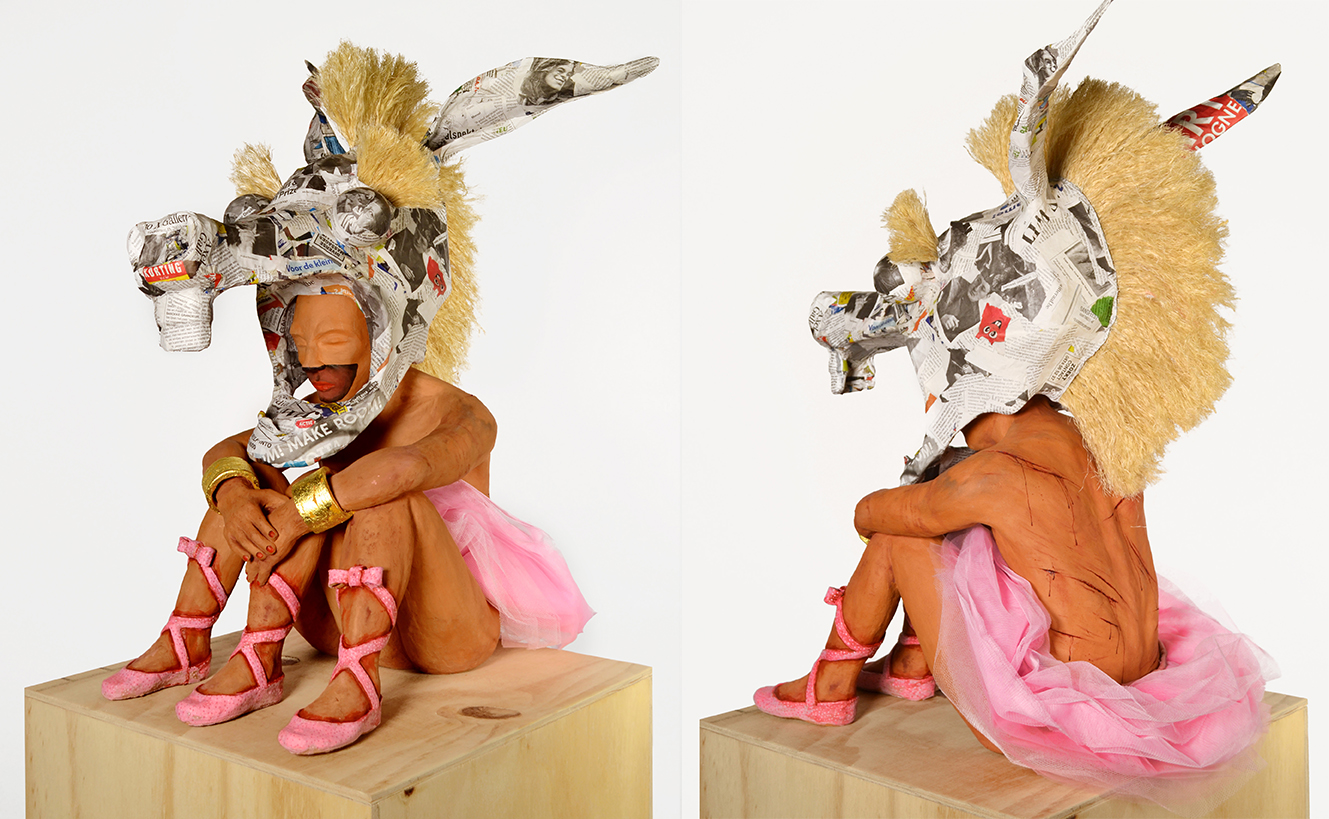
El dia del burro front and back. Contemporary artist Dodi Espinosa.
Let’s talk about the evolution of your practice over the years. Tell us about your commitment to your current medium.
During my search on what I could make with my hands as a kid, I met an art teacher from a rural school. Soon she became a friend and a mentor. One day she invited me to join some courses on traditional ceramic making. That was the first time I started to work with clay. I discovered a whole new world of possibilities; developed an appreciation for the creation of physical objects. I believe a work of art has an aura.
After migrating to Spain and then to Belgium, it took me a while to settle down. But soon after, destiny or my unconscious set things up in a way that I ended up working with clay again. I always say that working with clay is like having a relation with someone. Clay is mixed with water so it’s changing and evolving all the time.
Let’s talk about your career.
Well, one of my most memorable moments is my coming out as an artist. I was working for a long time without showing my work. My first exhibition was in 2018 at the erstwhile Trampoline gallery, where I showed my first series of works produced over five years. The main piece at that exhibition was called El Extasis, a big bas-relief made in black clay. Back then I was interested in understanding how someone can get into states of trance and tried to use this research to create this piece.
I must say that something happened while making it, a kind of catharsis. So, when I displayed that piece alone in the main room it really meant something and the audience could really feel that. This piece will be part of a group exhibition at the Fries Museum in the Netherlands next year. Just few days ago they confirmed that they will acquire that piece as part of their collection. I’m very happy that it will be in a museum from now on.
What were your biggest lessons and hurdles along the way?
As far as hurdles are concerned, I think that the toughest part has been to deal with the difficulties between my ideals as an artist and the facts of daily life, the art industry, the market and so on.
That’s a whole new world for me and that’s something I’m reflecting about in my latest project called Go bananas! It will be shown in a fictional art gallery called The Bakery Gallery soon.
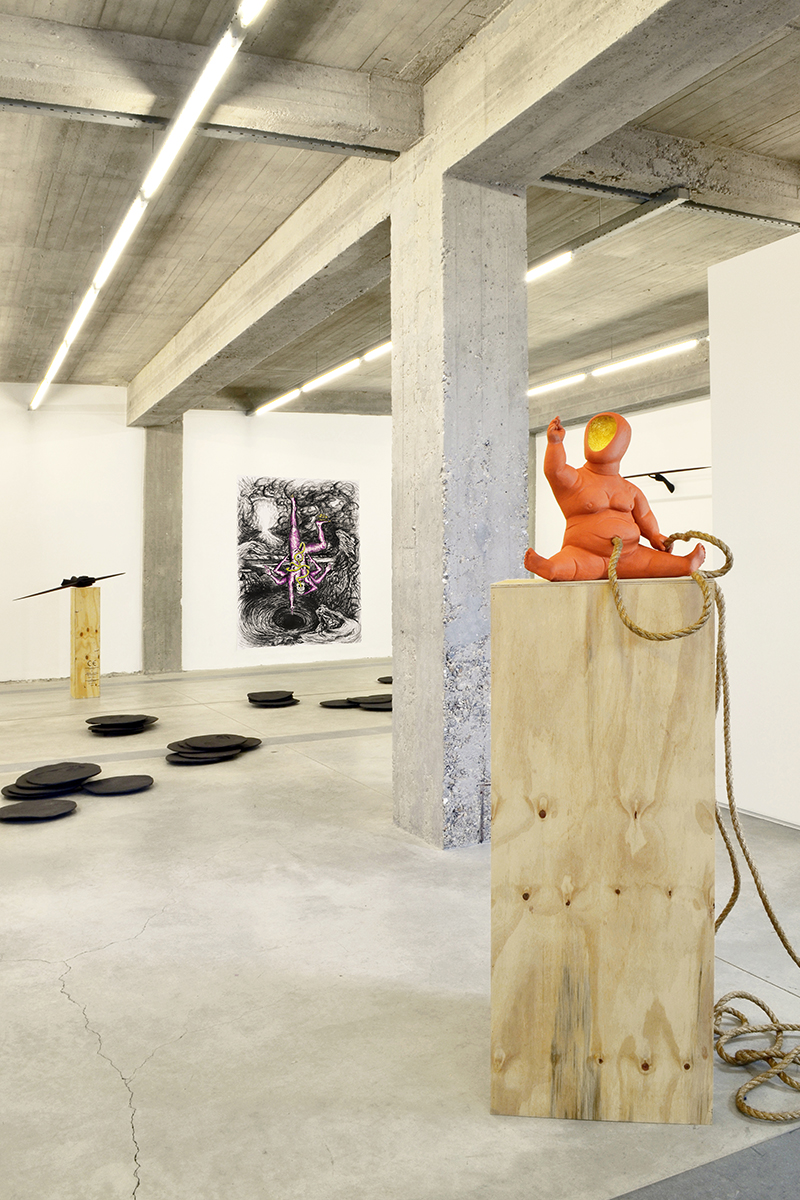
Exhibition view. Contemporary artist Dodi Espinosa. Casa de monos.
What is your experience of the power of formative collaborations? Which residency, curator or gallery helped you along on your artistic journey?
Simon Delobel from Trampoline gallery in Antwerp was the first person to give me a chance to show my work. He has always been supportive and is a very enthusiast person.
The second person I would like to acknowledge is Philip Van den Bossche. It was him who, back when he was still director of Mu.ZEE museum in Ostend, decided to purchase one of my sculptures called El dia del burro. It was the first time one of my pieces was in a museum, on display next to a painting by Leon Spilliaert. So it was quite an honor for me to be next to one of the most renowned Belgian Painters.
Third, I would like to mention Hanne Hagenaars. She is curator at the Fries Museum and has been very supportive. It is her who decided to request and acquire my bas-relief El Extasis. Finally, there is a private collector who supports my work but prefers to remain anonymous.
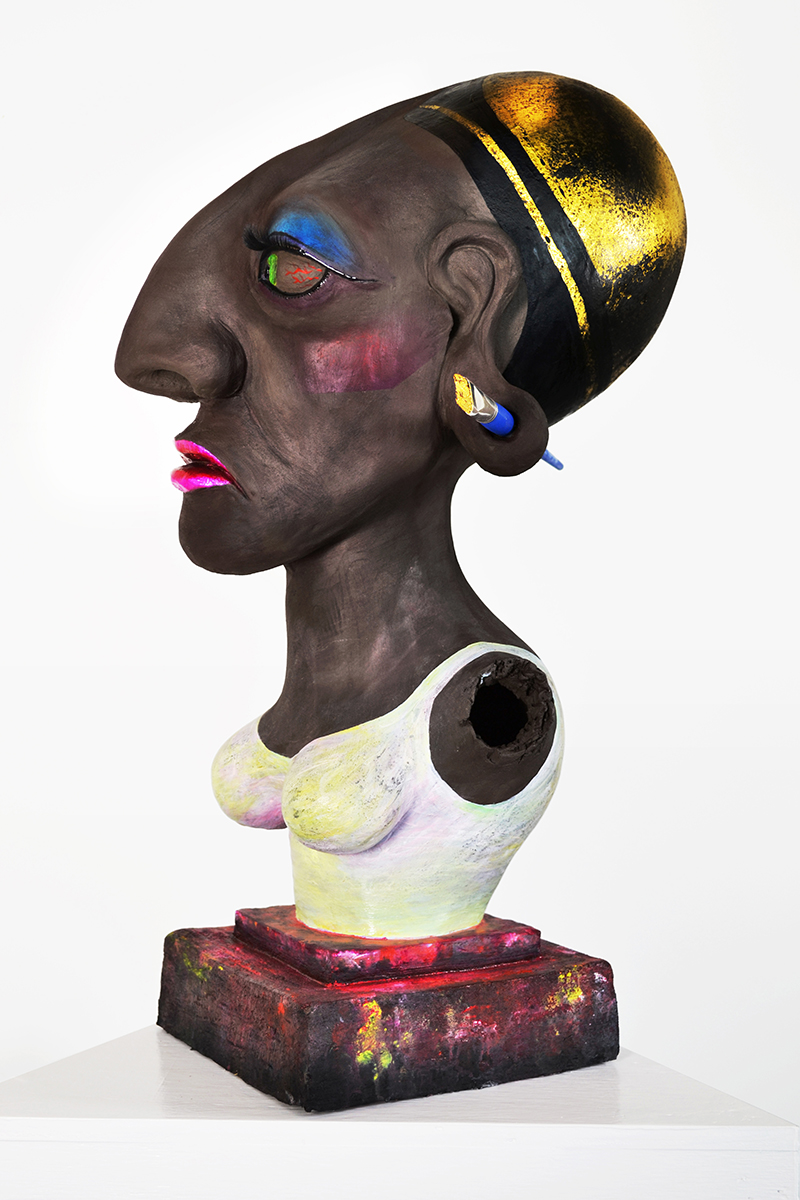
Cleo. Contemporary artist Dodi Espinosa.
Let’s talk about your frameworks, references and process. What inspires you?
Everything starts with daily life experiences. I try to be aware of my surroundings and be open for that “something” that might trigger my next piece. I have always had this attitude and it has opened many universes for me. Still remember as a kid, I think I was 10 years or so, I was walking through a “tianguis” which means a local flea market in Mexico. I saw this man selling second-hand books and I felt triggered to get one randomly. The book I bought was Thus Spoke Zarathustra by Friedrich Nietzsche. I still have that book. It has a picture of a painting by Gustave Moreau on the cover called The Apparition.
I can say that many of my early works are highly influenced by Nietzsche’s philosophy, like my installation called The Eternal Recurrence.
The further I studied Nietzsche the more I discovered other philosophers until I got to Buddhism and its principles. While I do not follow anything specific, many Buddhist principles have helped me to find an inner balance.

Exhibition view. Contemporary artist Dodi Espinosa. Independent trampoline, 2018.
What are you looking for when you look at other artists’ work? Which shows, performances and experiences have shaped your own creative process?
The first time I visited Madrid I went to El Prado. There I discovered the black paintings by Francisco de Goya. Suddenly I was immersed in something I didn’t know or feel before.
Also, I enjoy visiting archeological sites and museums. World archeology and very old art is one of my passions. I’m interested in the often rough and primitive approach to artistic expression of the first world masters of lost civilizations. It could be because of the deep connection those cultures had with mysticism, Mother Earth and the cosmos.
I really enjoyed the performance and workshop by Mexican choreographer Amanda Piña at De Singel in Antwerp. It was the first time I worked using my body. The concept departed from ritual peyote dances in Mexico. During the workshop we were directed by both: a contemporary choreographer and a Mexican shaman. It was a wild and spiritual experience.
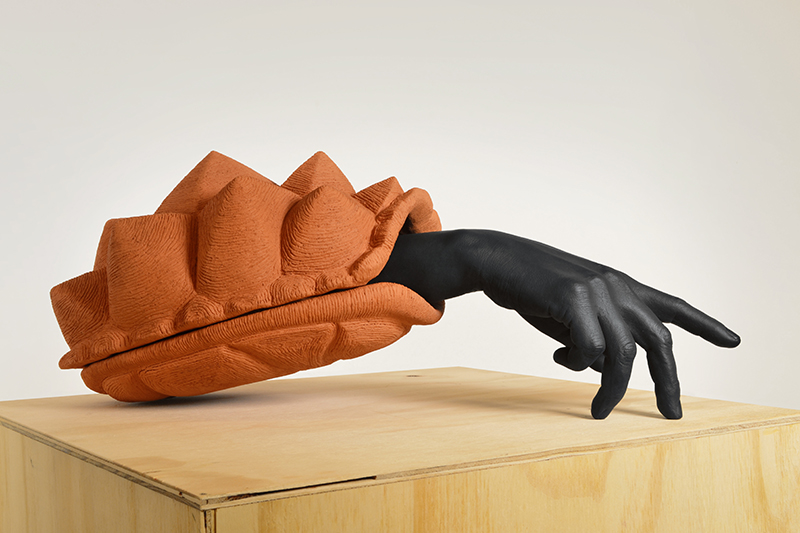
Nostalgia y deseo.
How do you balance art and life?
I think that art and life go together. They are inseparable. They feed each other, they are one.
What was your first sale? Do you handle the commercials yourself or is it outsourced to a gallery or an agent?
My first sale was a hanging sculpture called Status Quo. I was happy that my first piece ever sold ended up with real art lovers and connoisseurs. Since then I have collaborated with different galleries that have handled different sales and agreements. I have no fixed gallery representation. Long ago I got a proposal from a gallery to represent me but I didn’t feel it was the right approach.
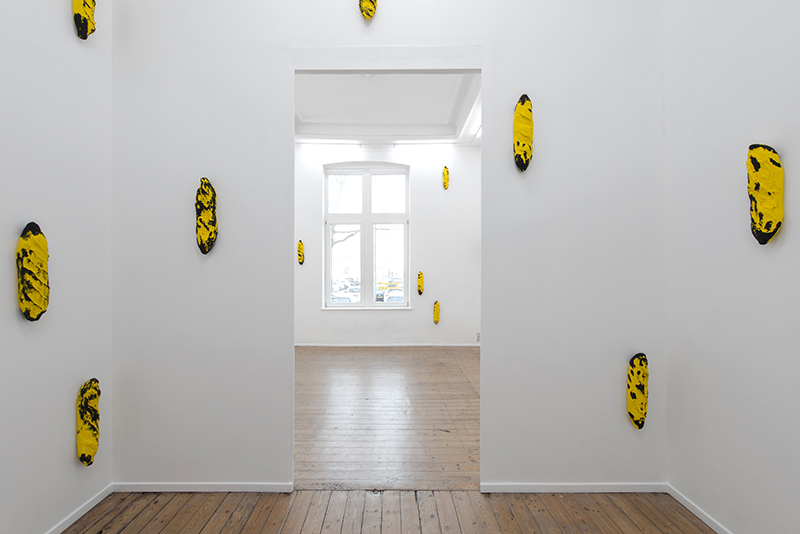
Go bananas.
Artists often experience contradicting motivations between the commercial and the creative. How do you strike a balance?
I suppose that big part of growing old and becoming mature is to accept that contradiction is part of one’s life and struggle, not only for artists but also for everyone in general. It’s the beauty of our imperfect existence.
How does your interaction with a curator, gallery or client evolve?
It is always different and most of the times a great learning process. I have had great and not so good experiences, but like John Giorno once said, “It’s not what happens, it’s how you handle it.” It is up to you to make the best out of each situation. I’m still at an early stage of my career, so it’s difficult to have a clear vision on how things will evolve with me.

Installation view. Trampoline, 2018.
Are you more of a studio artist or naturally collaborative by nature? How do you feel about commissions?
Good question! I’m kind of a loner. Maybe, that’s why I’m very fond of Ingmar Bergman’s films. But I’m also very curious about the idea of working in a group or collaborating with other artists or institutions. It hasn’t happened yet but I am open to proposals.
How does your audience interact and react to your work? What is that one thing you wished people would ask you but never do?
I cannot point to a specific reaction to my work but it’s true that in general I tend to have the remark that my work requires an intense physical involvement when seen in the flesh. I know that I can be “too much” for some people. I’m a loaded person and so is my work. That’s why I try to incorporate humour in what I do. I’m happy as far as the audience is not indifferent.
Regarding the question I wished people would ask but never do is a short one: “Are you crazy?”
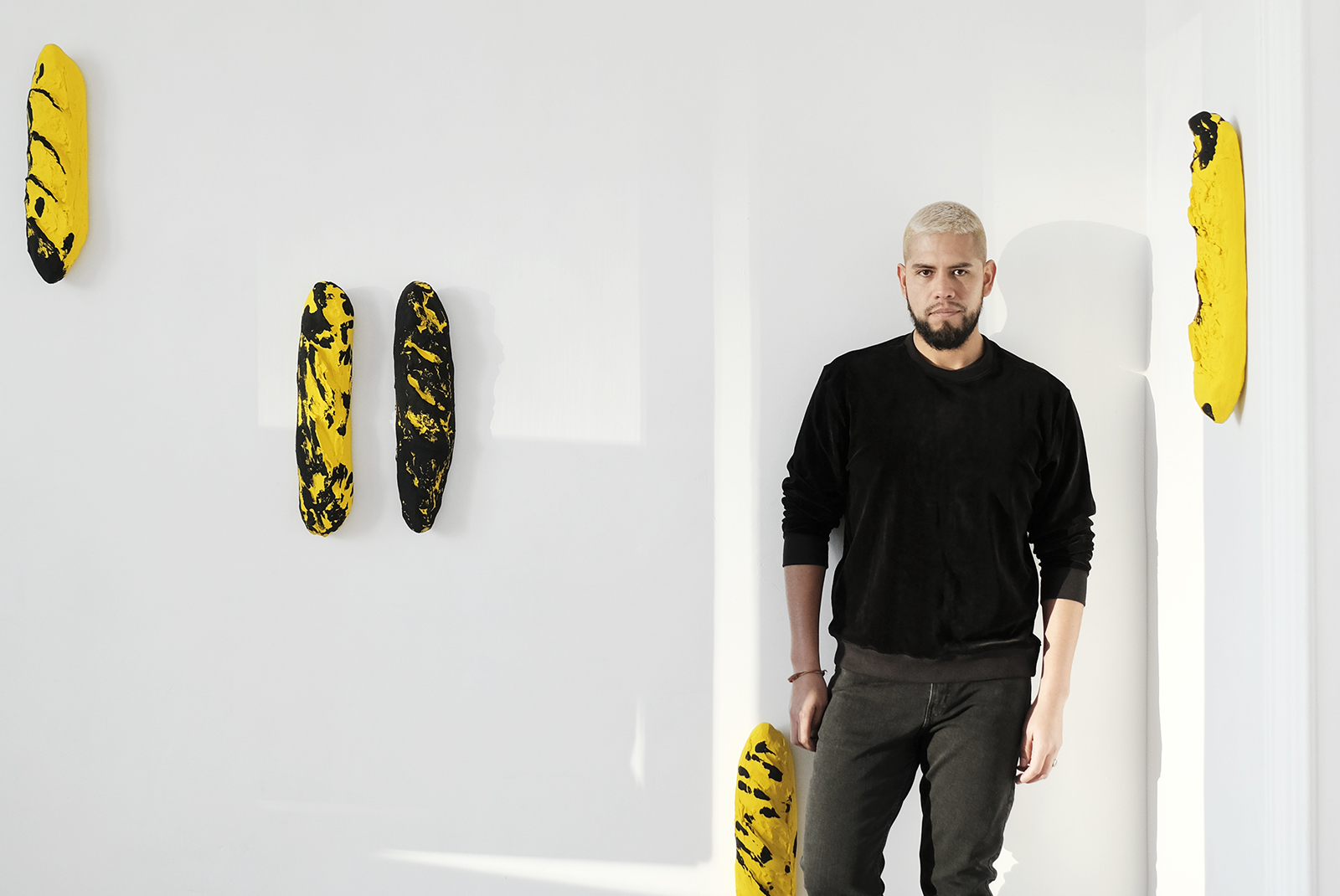
What are you working on now? What’s coming next season?
I just finished the project called Go Bananas, as I have already mentioned. There I will present my first edition ever consisting of a series of 44 baguettes made in ceramic and painted in full colour. The project will include a tombola, which is just a small way to speculate on my own work, as many artists, galleries and collectors do on a bigger scale.
Curator Charlotte van Buylaere just wrote an interesting text about this project for the January 2020 issue of HART magazine. I find hilarious that my project will happen while everyone is talking about Maurizio Cattelan’s last intervention at Basel Miami! It seems banana is in the air! The exhibition is on till January 11.
Then, from February 2020 to January 2021 I will be part of the group exhibition Other.Wordly at the Fries Museum. The show is curated by Hanne Hagenaars. This exhibition will be the first time I’m showing out of Belgium. I’m really looking forward to it!
Before you go – you might like to browse our Artist Interviews. Interviews of artists and outliers on how to be an artist. Contemporary artists on the source of their creative inspiration.








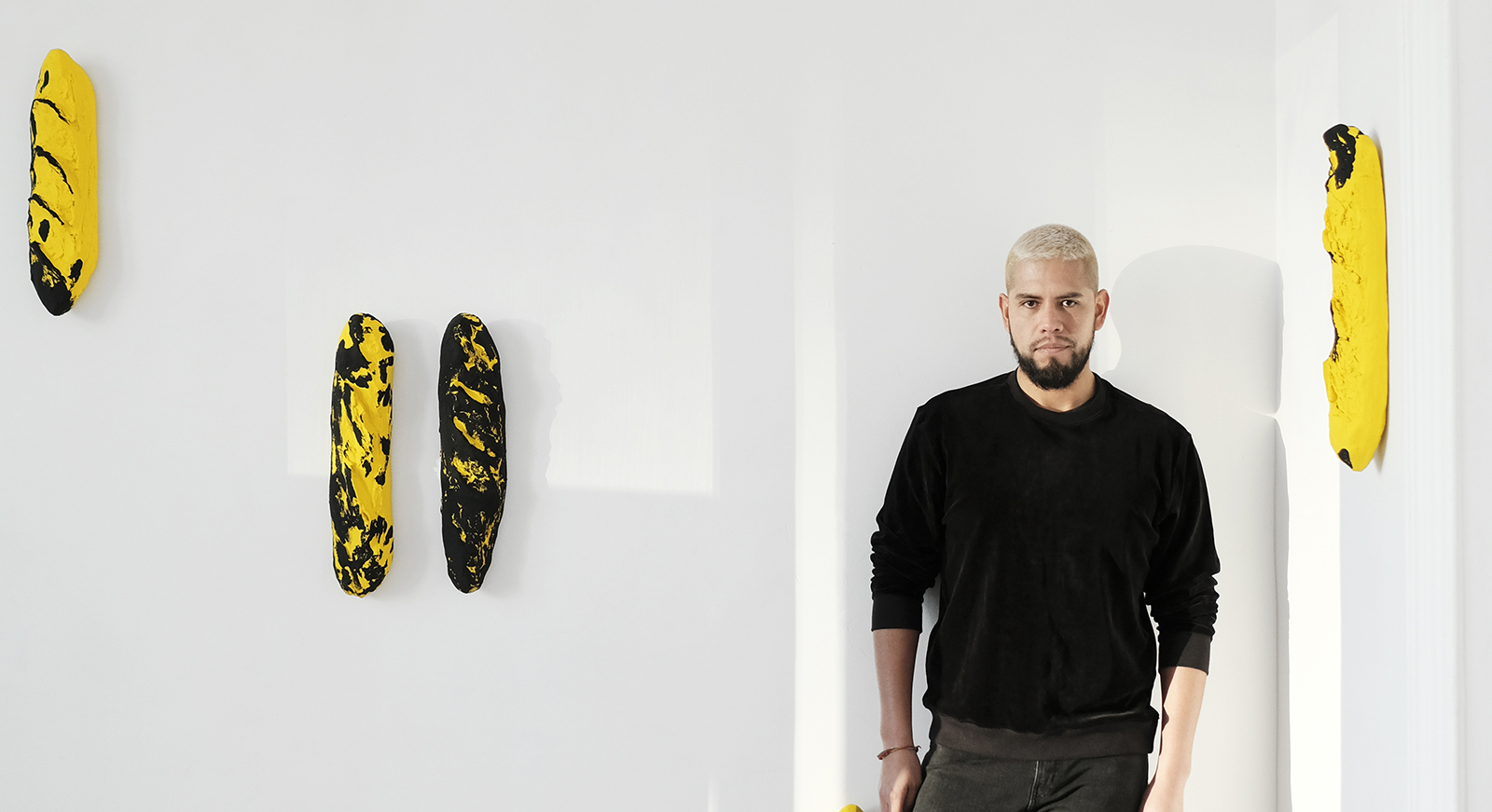



Add Comment